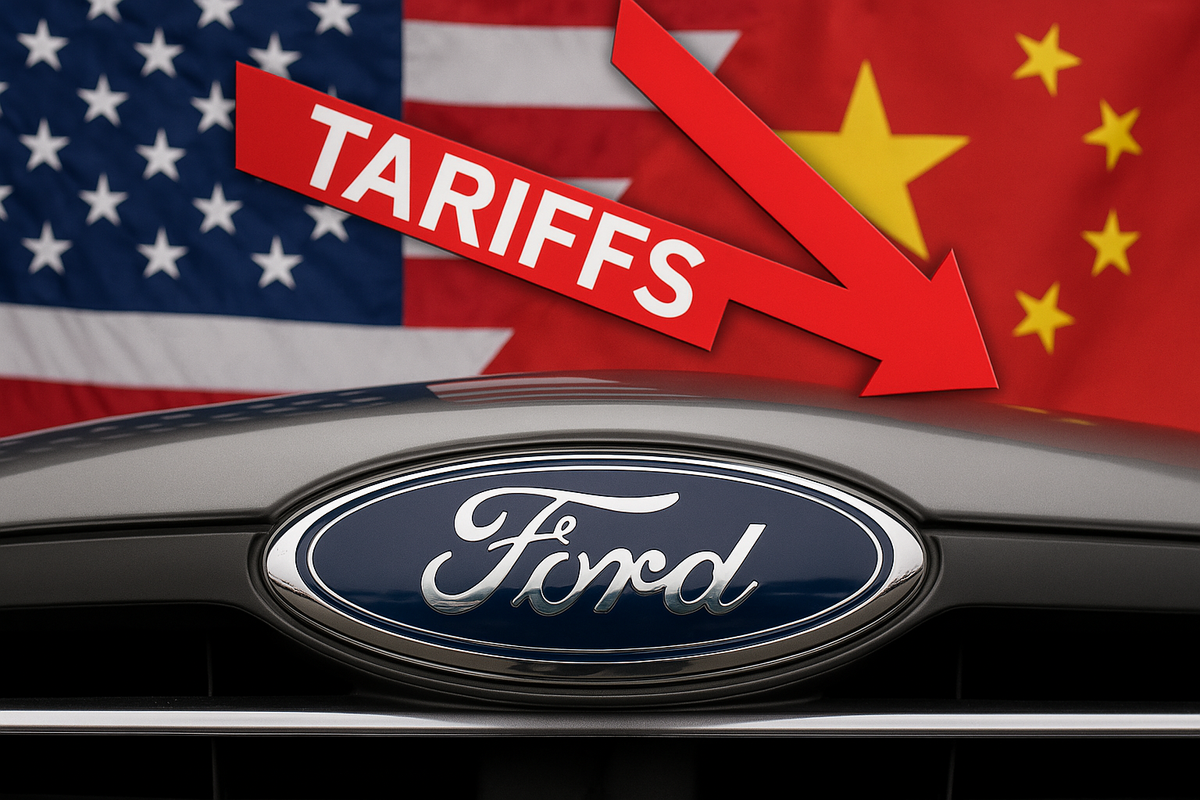Ford Motor Company (NYSE: F) is Expected to Be Hit Hard by Tariffs

April 01, 2025 – Detroit, MI – Ford Motor Company (NYSE: F), one of America’s oldest and most iconic automakers, is bracing for a challenging period ahead as proposed tariffs threaten to disrupt its supply chain, increase production costs, and squeeze profit margins. Analysts and industry experts warn that the company, already navigating a competitive global market and a costly transition to electric vehicles (EVs), could face significant headwinds if new trade policies come into effect.
The Tariff Threat
The specter of tariffs has loomed large over the U.S. automotive industry in recent months, with policymakers debating measures aimed at protecting domestic manufacturing and addressing trade imbalances. The Biden administration, alongside bipartisan voices in Congress, has signaled a willingness to impose steep tariffs on imported goods, particularly from countries like China, Mexico, and Canada—key players in Ford’s supply chain. While the specifics of these tariffs remain under negotiation, early proposals suggest duties as high as 25% on automotive parts and vehicles crossing U.S. borders.
For Ford, which relies heavily on a complex network of international suppliers, the impact could be profound. The company sources a significant portion of its components—ranging from steel and aluminum to advanced electronics—from overseas. Mexico, in particular, has become a critical hub for Ford’s manufacturing operations, with plants in cities like Hermosillo and Cuautitlán producing vehicles such as the Ford Bronco Sport and Mustang Mach-E. A 25% tariff on goods from Mexico alone could add billions to Ford’s annual operating costs, according to estimates from Goldman Sachs.
Rising Costs in a Competitive Market
Ford is no stranger to economic turbulence, having weathered the 2008 financial crisis without a government bailout—unlike its Detroit rival, General Motors. However, the current tariff threat comes at a particularly precarious time. The company has invested heavily in its electrification strategy, pouring more than $50 billion into EV development since 2021. Models like the F-150 Lightning and Mustang Mach-E have bolstered Ford’s reputation as a serious contender in the EV space, but these investments have yet to fully pay off, with EV sales still accounting for a modest fraction of total revenue.
Higher tariffs would exacerbate these financial pressures. Increased costs for imported parts would likely force Ford to either absorb the expense—cutting into already thin profit margins—or pass them on to consumers. The latter option risks alienating price-sensitive buyers in a market where competitors like Tesla and foreign automakers such as Toyota and Hyundai are vying for dominance. “Ford’s stuck between a rock and a hard place,” said Jessica Caldwell, an automotive analyst at Edmunds. “They can’t afford to lose market share, but they also can’t afford to keep eating these costs.”
Wall Street’s Reaction
Investors are already sounding the alarm. Ford’s stock (NYSE: F) has lagged behind the broader market in 2025, with shares down 8% year-to-date as of April 1. News of potential tariffs has only deepened concerns, with Morgan Stanley downgrading Ford to a “hold” rating last week, citing “heightened exposure to trade policy risks.” The firm’s analysts project that a full implementation of the proposed tariffs could reduce Ford’s earnings per share by as much as 15% in 2026.
The broader automotive sector isn’t faring much better. The S&P 500 Automobiles Industry Index has slipped 5% since tariff talks gained momentum in late March, reflecting Wall Street’s unease about the ripple effects on manufacturers and suppliers alike. Ford, however, stands out as particularly vulnerable due to its reliance on cross-border production—a legacy of decades of globalization that once kept costs low but now leaves the company exposed.
Ford’s Response
Ford executives have remained tight-lipped about contingency plans, but CEO Jim Farley hinted at the challenges during a recent earnings call. “We’re closely monitoring the policy environment and preparing to adapt,” Farley said, emphasizing the company’s commitment to American jobs and innovation. Behind the scenes, Ford is reportedly lobbying Washington to soften the blow, advocating for exemptions on certain automotive components and highlighting the potential for job losses if production costs spiral out of control.
The company may also look to reshore some of its supply chain, a move that would align with the political push for “Made in America” manufacturing. However, such a shift would take years and require billions in additional investment—resources Ford can ill afford as it balances its EV ambitions with shareholder expectations. In the short term, analysts expect Ford to lean on cost-cutting measures, including potential layoffs and production adjustments at its North American plants.
The Bigger Picture
Ford’s tariff woes are emblematic of broader tensions in the global economy. The push for protectionism, fueled by concerns over national security and economic sovereignty, has pitted domestic industries against the realities of an interconnected world. For automakers, whose supply chains span continents, the shift toward tariffs represents a seismic disruption—one that could reshape the industry for decades to come.
Competitors face similar challenges, but Ford’s scale and market position amplify the stakes. General Motors and Stellantis, the parent company of Chrysler, Jeep, and Dodge, also rely on international suppliers, though their exposure varies. Meanwhile, Tesla, with its more vertically integrated production model and focus on U.S.-based manufacturing, may emerge as a relative winner if tariffs take hold.
What’s Next?
The fate of Ford—and the broader U.S. auto industry—hinges on the outcome of ongoing trade negotiations. If tariffs are implemented in full, Ford could see its cost structure upended by early 2026, forcing tough decisions about pricing, production, and investment priorities. On the other hand, a watered-down version of the policy—or a last-minute reprieve—could buy the company breathing room to recalibrate.
For now, uncertainty reigns. “This is a pivotal moment for Ford,” said Caldwell. “They’ve got the legacy, the talent, and the vision to weather this storm, but the margin for error is razor-thin.” As Washington debates the future of trade, all eyes will be on Detroit—and on Ford’s ability to navigate the rocky road ahead.
Disclaimer: This article reflects current market analysis and projections as of April 01, 2025. Future developments in trade policy and Ford’s strategic response may alter the outlook.



